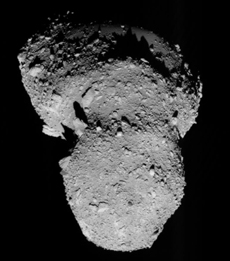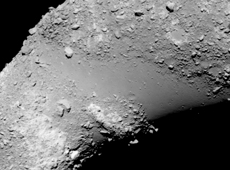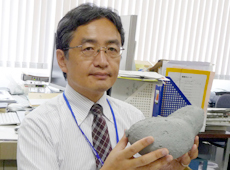Q. How would you like your experience with HAYABUSA to influence HAYABUSA-2?
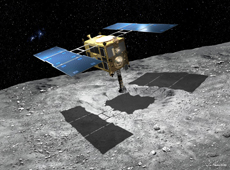
Asteroid explorer HAYABUSA-2 (courtesy: Akihiro Ikeshita)
I did indeed experience quite a lot through the HAYABUSA mission, but in particular, the biggest challenge was the operation of the spacecraft itself. To operate the ion engines, I had almost no time to rest while they were in operation, because we needed to stay in daily contact with the spacecraft and make continuous adjustments - deciding the next day’s and the next week’s operation as we confirmed HAYABUSA’s current location and velocity. It was like we were constantly controlling the orbit. So, if the ion engines can be improved for automated operation of HAYABUSA-2, there will be no need for someone to intervene all the time. We would like to reduce the burden on the operators as much as possible.
Also, although HAYABUSA was initially intended to be a four-year mission, its return was delayed by three years due to system malfunctions, and the mission ended up lasting seven years. In the original plan, the condition of the orbit allowed HAYABUSA to stay at Itokawa for only three months. So everything had to be done within that time frame before taking off for return to Earth. We were extremely busy, because we had to finish all the tasks in those three months - from surveying the asteroid, to selecting the landing area, to collecting samples - in a place we had never been before. I think that, in a way, the shortage of time contributed to some of the failures and malfunctions. So for HAYABUSA-2, we have chosen an orbit that allows it to stay on the designated asteroid for about a year and a half after arrival. This way, we will have enough time to observe the asteroid, and to rehearse the landing as many times as fuel allows.
Q. Do you have a vision in mind for post-HAYABUSA-2?
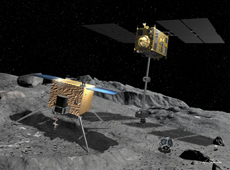
Asteroid explorer Hayabusa Mk2 (courtesy: Akihiro Ikeshita)
A sample return mission called HAYABUSA Mk2 is under consideration. The spacecraft is a full model change from HAYABUSA, and will be two or three times as big. This is essential because we are aiming for a celestial body at a greater distance from Earth. The candidate destinations are D-type asteroids, or a comet that no longer emits gasses. We don’t know yet what kind of materials they are made of, since there are no meteorites from celestial bodies at such distances. The mission of Hayabusa Mk2 is to bring unknown materials back to Earth, to address the mysteries of the early days of the Solar System. Q. What is your goal now? My present goal is to make HAYABUSA-2 a reality. Once we have the budget and the project begins I’d like to involve as many young scientists and engineers as possible, which will benefit the development of future missions. To move on to HAYABUSA Mk2, we must make HAYABUSA-2 a success.
Associate Professor, Department of Space Information and Energy, Institute of Space and Astronautical Science, JAXA
HAYABUSA-2 Project Preparation Team Leader, Systems Engineering Office, JAXA Space Exploration Center
Dr. Yoshikawa graduated from the Department of Astronomy and the Graduate School of Science, both at the University of Tokyo. After working as a research fellow at the Japan Society for the Promotion of Science, he was on staff at the Communications Research Laboratory from 1991, and moved to the Institute of Space and Astronautical Science (now part of JAXA) in 1998. Dr. Yoshikawa was a project scientist for the asteroid explorer HAYABUSA. He specializes in celestial mechanics; his research centers on orbital analysis of small Solar System bodies such as asteroids and comets. In addition to research on selecting orbits for artificial satellites and planetary explorers, he also works on analysis of the hazards of Earth impact with celestial bodies.
HAYABUSA’s Engine Turned Our Hopes into Reality
The Moment HAYABUSA Became a Meteor
Preparing for HAYABUSA’s Successor

